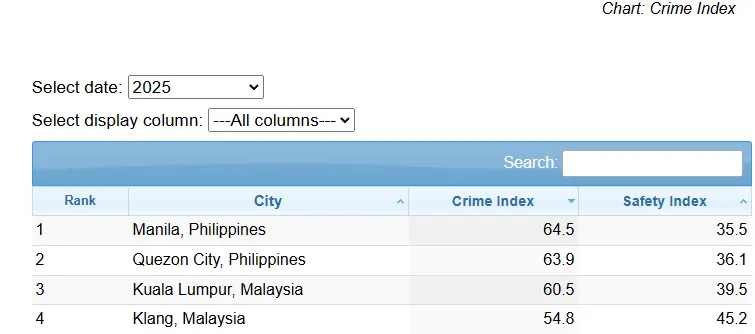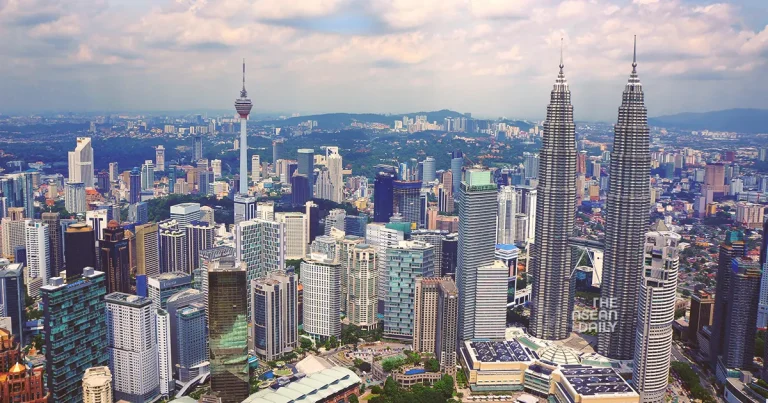24-2-2025 (KUALA LUMPUR) As the teeming capital of a rapidly modernising nation, Kuala Lumpur embodies both the promise and perils of urbanisation in Southeast Asia. The city’s skyline, dominated by the iconic Petronas Towers and glittering shopping malls, paints a picture of prosperity. Yet, beneath this veneer lies a stark reality: Kuala Lumpur has been ranked the third most dangerous city in the region, according to the latest Numbeo Crime Index.

With a crime index score of 60.5, Kuala Lumpur trails only Manila (64.5) and Quezon City (63.9) in Southeast Asia, securing the 69th spot globally. This ranking underscores the challenges faced by a city grappling with the growing pains of rapid development, income inequality, and urban sprawl.
A City of Contrasts
Kuala Lumpur is a microcosm of modern Asia’s urban transformation. Its affluent central districts, such as the KLCC area, are juxtaposed against gritty outer suburbs and densely packed informal settlements. The city’s crime index reflects this divide: the city centre scores a moderate 53.9, while the outskirts register a significantly higher 66.5.
“The boundaries blur in this massive city,” said Alastair, a British tourist who was mugged near Kuala Lumpur’s Chinatown night market. “One moment you’re in a safe, modern area, and the next, you’ve wandered into a dodgy neighbourhood.”
Property crimes, including snatch thefts, burglaries, and carjackings, are particularly prevalent. These offences are often driven by the widening wealth gap and limited economic opportunities in disadvantaged areas. A lucrative black market, fuelled by theft rings targeting affluent neighbourhoods and businesses, exacerbates the problem.
Migration and Marginalisation
Another factor contributing to Kuala Lumpur’s crime woes is its significant migrant population. Non-citizens make up nearly 10% of Greater KL’s inhabitants, with many more undocumented migrants living on the margins of society. While these communities have played a vital role in the city’s development, their integration remains a challenge.
“The immigrant crime link is often overstated, but there’s no denying that marginalisation breeds desperation,” said a local sociologist. “Deprivation drives some to criminality, creating a vicious cycle that’s difficult to break.”
Manila: A Cautionary Tale
At the top of Southeast Asia’s crime index is Manila, the Philippine capital, with a score of 64.5. Once hailed as the “Pearl of the Orient,” Manila now grapples with urban decay, poverty, and lawlessness. An estimated 4 million residents live in slums, where crime, from petty theft to armed robbery, is rampant.
Despite its challenges, Manila remains a popular tourist destination, attracting over 2.3 million international visitors last year. Most tourists stay within safer enclaves like the historic Intramuros district and Makati City’s upscale establishments. However, violent crimes, including armed robberies, occasionally spill into these areas, prompting warnings for travellers to exercise extreme caution.
For Kuala Lumpur, the stakes are high. As Malaysia positions its capital as a regional hub for finance, transportation, and tourism, addressing its crime crisis is imperative. Local leaders recognise the need for a comprehensive approach that tackles the root causes of crime, from poverty and inequality to inadequate housing and job opportunities.
Similarly, Manila’s future hinges on improving civic conditions and strengthening law enforcement. Both cities serve as cautionary tales of urbanisation’s double-edged sword, where rapid development often outpaces the infrastructure and social systems needed to sustain it.




